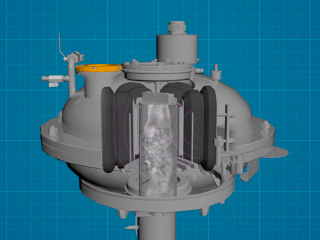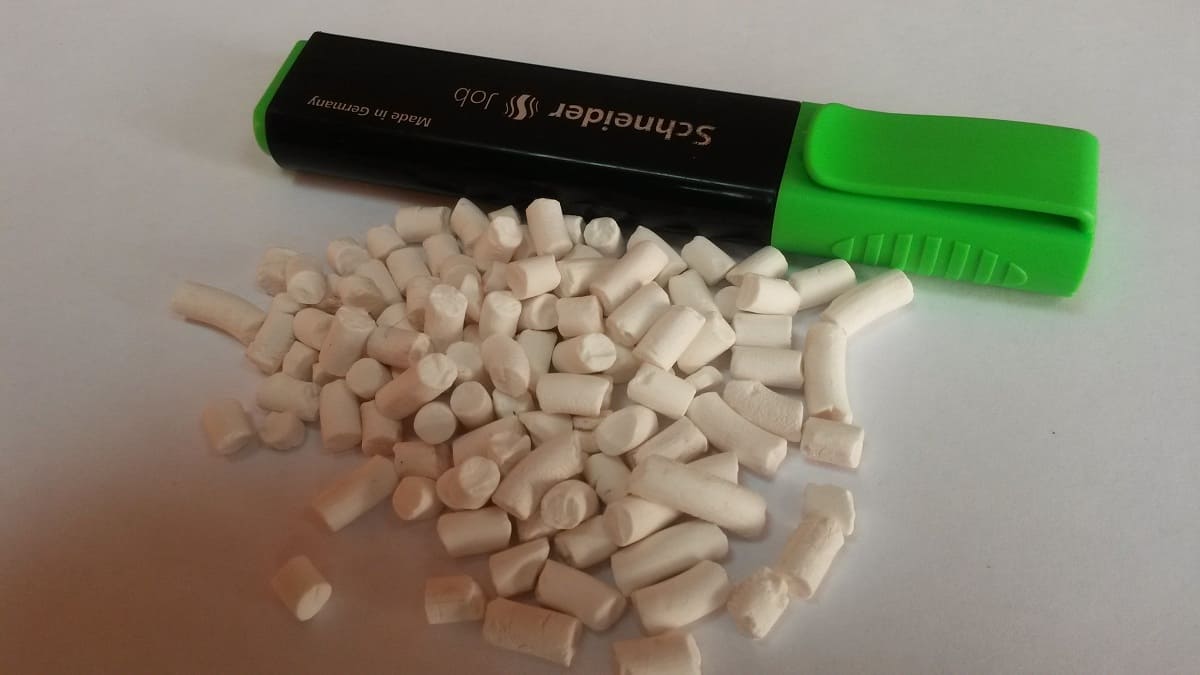Natural zeolite is a nanoporous mineral with sorbing, ion-exchange, catalytic, and other properties. This is a rock of volcanic and sedimentary origin classified into more than 40 structural types. Zeolite particles are aqueous aluminosilicates of calcium, sodium, and other metals with a frame structure consisting of windows, channels, and cavities at the level of a crystalline lattice. Due to this special structure, the substance is distinguished by a high level of selectivity in adsorption at the molecular level. Zeolite activation allows increasing its adsorption, ion-exchange properties. One of the methods for increasing the substance activity is mechanical processing, grinding.
What is mechanical activation of zeolite?
Zeolite grinding is of activating nature. In the course of grinding, the specific surface increases, and so does the crystallinity degree of the product. At the same time, the higher the latter indicator, the better the sorption properties of the material. In addition, during activation, non-zeolitic components are removed, and the concentration of zeolites increases. We also note that the depth of structural transformations of the substance depends on the type and intensity of grinding the mineral.
During the mechanical activation of zeolite, an open frame-cavity structure is released at the crystalline lattice level. In this case, the aquatic complexes of metals located in the cavities break up. Free cations move through the zeolite lattice and bind to oxygen atoms.
Application of zeolite
Due to its high adsorbing, catalytic, ion-exchange, and other properties, zeolite is applied in dozens of industries and in agriculture. It is used in soil fertilization, petrochemistry, in drying of gases and other media, in extraction of radionuclides, in potable, service water treatment, in animal feeding, and in crop farming.
The application of zeolites even reaches the field of creating life support systems for space stations. In this case, a synthetic substance is normally used. It serves as an adsorbent for carbon dioxide exhaled by a human being.
The requirements for the product grinding, activation degree largely depend on the field of use. The main uses of zeolite and the requirements for particle dispersion depending on this:
- greenhouse crop farming —grains from 3 to 10 mm are used in soil preparation;
- soil fertilization — granules from 1 to 3 mm are applied;
- livestock farming — particles for feed stuff should be not less than 1 mm;
- poultry farming — grains from 1 to 3 mm are blended in feed supplements;
- ion-exchange technologies — water filters use powder from 1 to 3 mm;
- construction —additives in fractions of a millimeter are used for cements, concretes, mortars.
Zeolite is also actively used in adsorption technologies as polymer fillers for paper. Thus, a product with the grinding fineness from fractions of a millimeter to 3–10 mm enjoys application in various fields.
Due to a wide scope of application, availability, ease of obtaining, and high efficiency of zeolite, the manufacture of this product is considered to be a promising area. At the same time, zeolite grinding to a certain fraction has become the main task in preparing this kind of supplement for feed stuff, soils, and other fields. It is important to achieve the homogeneity and uniformity of particles. Zeolite activation also plays a role which is reflected in its sorption, ion-exchange properties, and its ability to be assimilated by living organisms and plants. An increase in the specific area of the product affects the ability to interact with other elements enhancing the sorption features of the substance.
Thus, for example, the more activated zeolite is, the more efficiently it absorbs microtoxins and removes them from the body, improving the digestion in animals. In addition, it is also a source of trace elements for plants. And owing to sorption and ion-exchange features, the mineral makes soil nutrients available for intake by plants. Zeolite decontaminates, softens water, and removes ammonium ions and ammonia therefrom. Zeolite activation is also crucial for these processes.
Conventional methods of processing the substance do not always allow achieving the desired result; therefore, it is reasonable that technologies be improved. First, let us discuss the disadvantages of classic design schemes.
Zeolite activation by conventional methods
Classic grinding and mechanical activation of zeolite involve the use of crushers in the form of vibrating centrifugal, planetary mills, and disintegrators. Next, the ground product is dried in drying drums. While processing is underway, sorting is concurrently carried out using the screens that separate the substance into fractions. Depending on the scope of use, primary and secondary zeolite grinding is carried out.
The following points are considered to be disadvantages of classic technologies:
- difficulty in adjusting the granulometric composition;
- low sanitary and hygienic conditions for zeolite processing;
- high consumption of energy and other resources for performing the processes.
GlobeCore vortex layer device (AVS) helps in solving these problems of classic equipment. When using it, zeolite activation is carried out under the influence of an electromagnetic field in the medium of ferromagnetic particles which efficiently grind the substance to a homogeneous state having turned into diminutive mixers and crushers. Let us discuss how it works.
Zeolite grinding and activation using a vortex layer device

Under such conditions, zeolite grinding is intensified, and the particles are activated along with that. In just a few seconds, it is possible to grind the product to a fraction of a millimeter. At the same time, in order to obtain zeolite particles of a certain fraction, it is enough to merely adjust the time of processing the substance in the device. Therefore, a homogeneous finely dispersed substance with required grain size can be easily obtained by means of AVS. Moreover, all of them will be approximately the same due to a high intensity and uniformity of processing the product.
Zeolite activation in the vortex layer is carried out with the use of grinding, mixing under the influence of high local pressures, acoustic vibrations, electromagnetic processing, and electrolysis in the event of a liquid medium. However, zeolite grinding by means of AVS is normally carried out in a dry form. As a result, it is possible to simplify the technological process, and further additional processing of the substance is almost not required.
As part of electromagnetic processing of zeolite by means of AVS, the yield of ground and activated product increases due to intensification of processes. At the same time, the substance becomes better in quality compared to conventional processing methods:
- the uniformity of granulometric composition increases;
- the proportion of oblong, flaky grains decreases;
- the finished product is fully in line with the specified class.
In addition, it is possible to move away from multistage processing of the substance which involves primary, secondary zeolite grinding. Now, it is enough just to feed the substance into the device and process it for a certain time. As a result, we immediately obtain grains of required size, and no secondary processing is required. Zeolite activation reaches high values; thus, the product becomes more suitable for most applications.
Advantages of zeolite processing by means of a vortex layer device
Zeolite grinding and activation by means of GlobeCore vortex layer device (AVS) has the following advantages compared to conventional methods for mechanical activation and grinding of the mineral:
- Cost-effectiveness
Due to low power requirement of AVS-100 and AVS-150 (4.5 kW and 9.5 kW respectively), severalfold less energy is consumed for zeolite grinding compared to energy-intensive classic units with a relatively low efficiency. Furthermore, the yield of product per unit of time increases.
- Efficiency
Due to comprehensive processing in an electromagnetic field, high-quality zeolite activation is observed as a result of which a system of cavities and channels with a silicon-aluminum-oxygen framework in the particles becomes available. Sorption, ion-exchange properties improve. The powder is distinguished by homogeneity, uniform particle size, and purity.
- Usability
The compact unit replaces massive, heavy equipment, and is easily integrated into an existing production line. At the same time, the device requires no pedestals for installation.
Zeolite activation by means of a vortex layer device is relevant for a number of enterprises specialized in production of fertilizers, feed supplements, filtering components, structures, construction materials, and other products. Due to cost-effectiveness, compactness, availability, the unit is suitable for both a large-scale factory and a small workshop.
For seeking advice and ordering AVS-100 and AVS-150 device models, please contact GlobeCore sales representatives.



